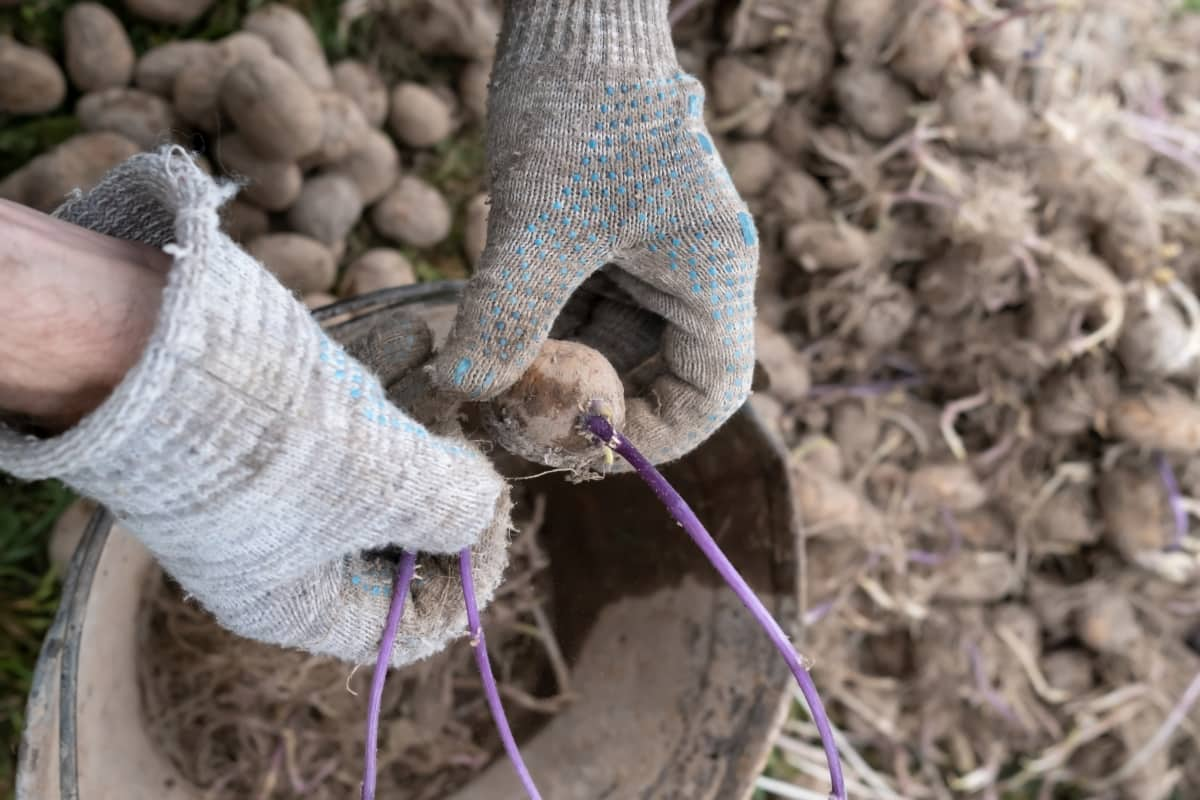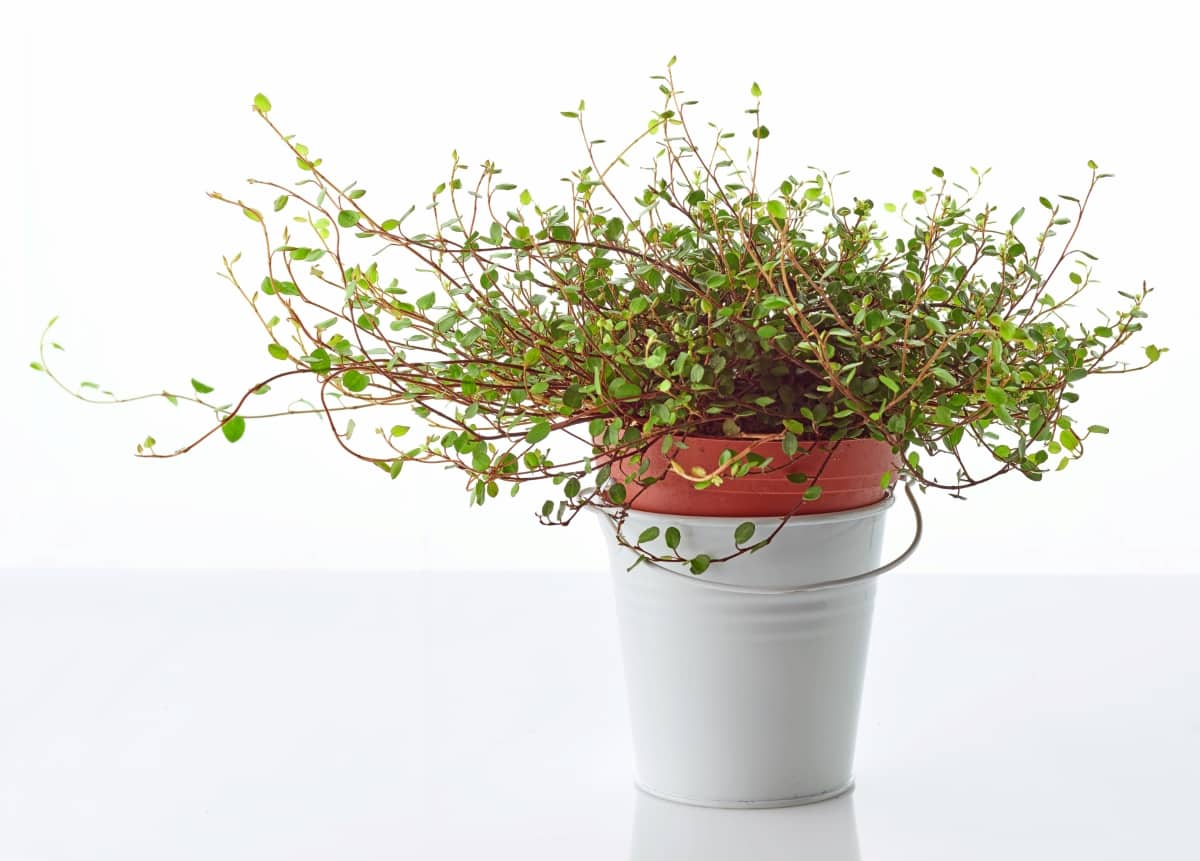Home bucket gardening is an innovative and cost-effective way to cultivate various plants. By repurposing old paint buckets, you can create a sustainable garden and contribute to reducing waste. You will learn how to turn a paint bucket into a functional planter in this guide, which includes tips on planting, watering, and maintaining it. Whether you have limited space or want to explore a new gardening method, this guide is here to help.

Preparing Old Paint Buckets for Growing Plants
- Before you start, clean the buckets thoroughly to remove any paint residue or contaminants that could harm your plants.
- Start by rinsing the buckets with water to remove loose dirt or debris.
- Then, brush each bucket with water and mild dish soap, and scrub the inside and outside surfaces.
- Rinse the buckets again with clean water to remove any soap residue.
- Once the buckets are clean, you can drill drainage holes to ensure proper plant water drainage.
- Finally, fill the buckets with potting soil and plant your desired flowers or vegetables.
Selecting the Ideal Plants for Paint Bucket Gardening
Selecting the ideal plants for paint bucket gardening requires careful consideration. Since paint buckets have limited space, choosing compact plants for container gardening is important. Herbs like basil, mint, and rosemary are excellent choices as they add flavor to your meals and thrive in small spaces.
Succulents like aloe vera and jade plants are low-maintenance options that add a touch of greenery to your surroundings. If you prefer flowers, opt for compact varieties like petunias or marigolds. Remember to select plants that require similar amounts of sunlight and water to ensure successful growth in your paint bucket garden.
Creating Drainage Holes in Paint Buckets
- Creating drainage holes in paint buckets for planting is a simple and effective way to ensure proper water flow and prevent waterlogging.
- To begin, gather all the necessary materials, including a paint bucket, a marker, a drill, and a drill bit suitable for plastic.
- Place the pot on a sturdy surface and flip it upside down. Start by marking the desired locations for the drainage holes on the bottom of the bucket.
- Next, carefully drill holes at the marked spots using the appropriate drill bit size.
- Ensure that the holes are equally spaced and adequately sized to allow excess water to escape while retaining enough soil.
- Once the holes are drilled, clean any plastic debris and rinse the bucket before using it for planting.
Choosing the Right Soil Mix for Paint Bucket Gardening
Choosing the right soil mix for paint bucket gardening is crucial for the success of your plants. A good soil mix should be well-draining, lightweight, and nutrient-rich. One popular option is a mix of equal parts potting soil, compost, and perlite. This combination provides a balance of moisture retention, aeration, and nutrients.
Another option is to use a lightweight peat-based mix that helps retain moisture. It’s important to avoid using garden soil alone, as it tends to be too heavy and lacks proper drainage. Selecting the right soil mix ensures healthy and thriving plants in your paint bucket garden.
Planting Seeds or Transplants in Old Paint Buckets
Now it’s time to decide whether to plant seeds or transplants in a bucket. If you choose seeds, follow the packet instructions for planting depth and spacing. Sow the seeds evenly across the soil’s surface, then lightly press them down and cover them with a thin layer of soil. If you prefer transplants, gently remove them from their original pots and place them in the buckets, ensuring the top of the root ball is level with the soil surface. Fill in any gaps around the plant with additional potting mix, firming it gently with your fingers.
Watering Techniques for Paint Bucket Gardens
- Watering techniques are vital for the success of paint bucket gardens. It is important to strike the right balance when it comes to watering.
- Overwatering will cause root rot, while underwatering can stunt the growth of plants. To ensure proper watering, consider the following techniques.
- Water the plants early or late in the evening to minimize evaporation.
- Water the plants at the base, avoiding the leaves to prevent diseases.
- Water deeply but infrequently. The soil should be allowed to dry out between watering sessions.
- A watering can or else a gentle spray nozzle can be used to avoid damaging the plants.
- Finally, monitor the moisture levels regularly and adjust the watering accordingly. By following these techniques, your paint bucket garden will thrive.
In case you missed it: How to Use Grow Lights for Indoor Seedlings: Best Grow Light Setting for Seedlings

Fertilizing Plants in Paint Bucket Gardens
Fertilizing plants in paint bucket gardens is essential to ensure optimal growth and health. With limited space and resources, paint bucket gardens offer a convenient and cost-effective solution for urban gardening. To fertilize the plants, it is recommended to use organic fertilizers such as vermicompost or worm castings. These natural fertilizers provide essential nutrients to plants without the risk of chemical buildup.
Following the recommended application rates and avoiding over-fertilization is important, as it can lead to nutrient imbalances and harm the plants. Regularly monitoring the plants’ growth and observing any signs of nutrient deficiency can help determine the right fertilization time. Paint bucket gardens can thrive and yield a bountiful harvest by following these guidelines.
Managing Pests and Diseases in Paint Bucket Gardens
Several effective strategies exist to control pests and diseases in these small-scale gardens.
- First, practicing good hygiene by regularly cleaning and disinfecting the paint buckets can help prevent the buildup of pathogens.
- Additionally, selecting disease-resistant plant varieties and providing optimal growing conditions, like proper watering and adequate sunlight, can reduce the risk of plant diseases. Organic pest control methods,
- like insecticidal soaps or neem oil, can effectively manage common pests.
- Regular inspection and early detection of pests and diseases are crucial for timely intervention and minimizing damage.
Providing Adequate Sunlight for Paint Bucket Plants
- Paint bucket plants require adequate sunlight to thrive. Sunlight is vital for photosynthesis, the process by which plants convert sunlight into energy.
- When selecting a location for your paint bucket plants, choose an area that receives at least six hours of direct sunlight daily.
- By placing the plants near a sunny window or outdoors in a well-lit area, this can be achieved.
- If you are growing plants indoors, consider using artificial grow lights to simulate the natural sunlight.
- Providing adequate sunlight will ensure your paint bucket plants receive the necessary energy to grow and flourish.
Pruning Techniques for Paint Bucket Gardens
- By selectively removing unwanted or excessive growth, pruning helps to shape plants, improve air circulation, and promote flower and fruit production.
- Several pruning techniques can be employed, depending on the type of plant and desired outcome.
- One common technique is “pinching,” which involves using fingers or pruning shears to remove the tips of young shoots, encouraging branching and bushier growth.
- Another technique is “thinning,” where selected branches or stems are completely removed to reduce overcrowding and promote better light penetration.
- Overall Proper pruning techniques are essential for maintaining the health and beauty of paint bucket gardens.
In case you missed it: How to Grow Meyer Lemon Tree: A Planting Guide for Container and the Ground

Conclusion
Following the steps discussed above, you can successfully transform these unused containers into functional planters. This guide has provided valuable insights and instructions, from preparing the buckets and ensuring proper drainage to selecting suitable soil and choosing the right plants. Embracing this sustainable gardening practice helps reduce waste and allows you to enjoy the beauty and benefits of growing plants in your Garden.
- Feed Your Flock for Less: Top 10 Tips to Save on Chicken Feed
- Ultimate Guide to Ossabaw Island Hog: Breeding, Raising, Diet, and Care
- Hatching Answers: The Top 10 Reasons Your Chickens Aren’t Laying Eggs
- Eggs and Economics: Breaking Down the Cost of Raising Backyard Chickens
- Defend Your Greens: Proven Methods to Keep Iguanas Out of Your Garden
- Ultimate Guide to Cinnamon Queen Chicken: A Comprehensive Guide for Beginners
- Ultimate Guide to California Tan Chicken: Breeding, Raising, Diet, Egg-Production and Care
- Ultimate Guide to Marsh Daisy Chicken: Breeding, Raising, Diet, and Care
- 10 Types of Chicken Farming Businesses You Can Start for Profits